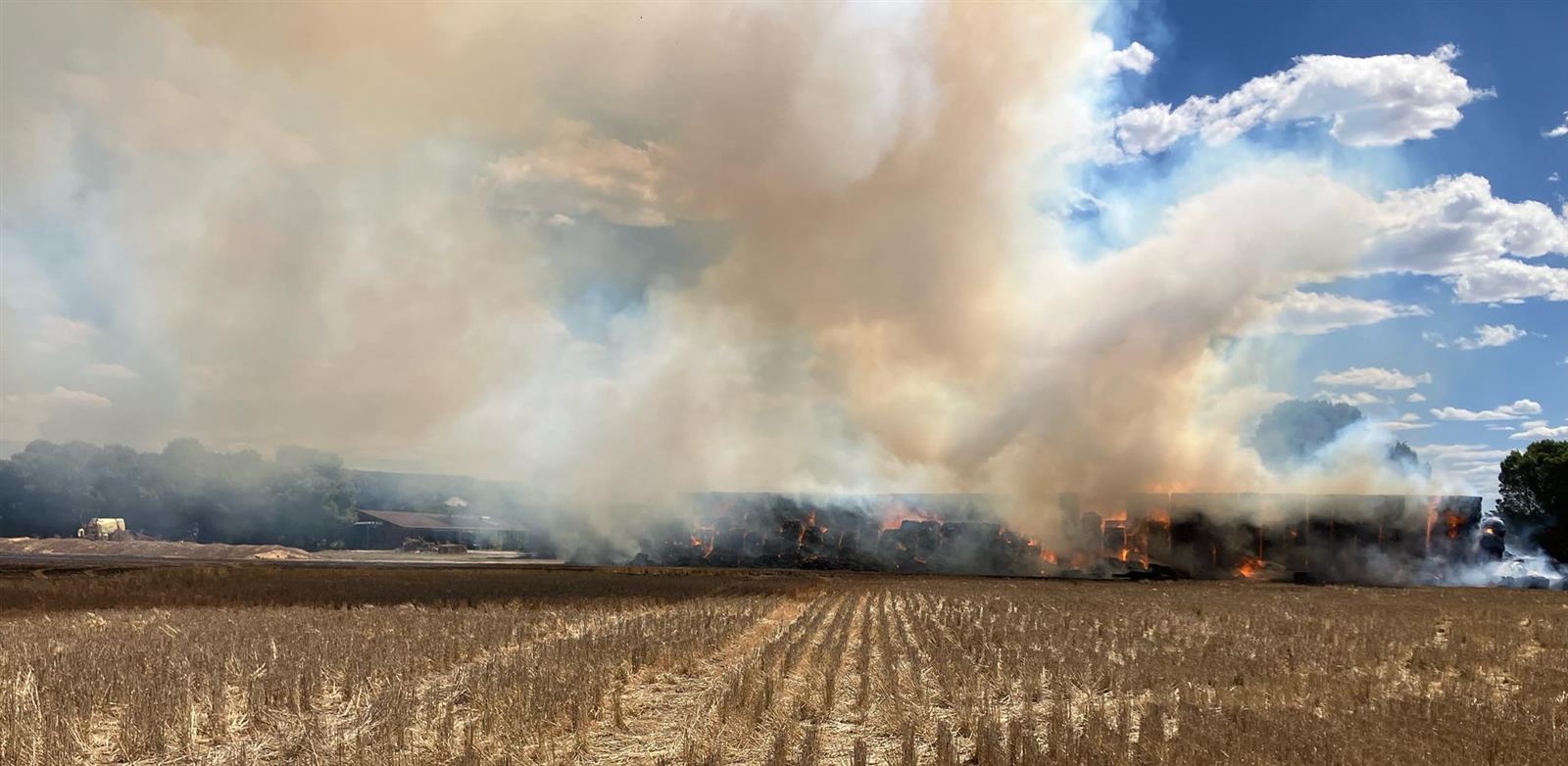 Haystack fire in Arapiles on Sunday, 4 February. Credit: D17 Commander Lindsay Barry
Haystack fire in Arapiles on Sunday, 4 February. Credit: D17 Commander Lindsay Barry
CFA is urging farmers to ramp up their hay maintenance for the remainder of the season, following a surge of haystack fires, with CFA responding to more than 50 since November.
Igniting predominantly in the western parts of the state across the Wimmera, Loddon and Mallee regions, CFA have responded to 29 in the North West and 12 in the West.
The rise calls for the agriculture sector to monitor the moisture and temperature of their hay more regularly, to store in separate stacks and in sheds away from farming equipment and structures.
A recent haystack fire of over 1,000 hay bales in Arapiles on a total fire ban day in the Wimmera and the Mallee serves as a timely reminder for the agriculture sector to ensure they are implementing the appropriate management tools to prevent fire risk.
CFA District 17 Commander Lindsay Barry said spontaneous combustion is the leading cause of haystack fires in Victoria and just one damp bale is enough to ignite a whole stack.
“We are currently in the storage phase of hay season, and there are some contributing factors that lead to ignition,” Lindsay said.
“Unfortunately, at the beginning of the season, some bales weren’t produced to industry standard, and were stored away with too much moisture.
“Green or damp hay is susceptible to overheating, so those two in combination will make a fire.”
Lindsay said due to the significant rain we have received during summer, haystacks that were neither placed inside a shed nor covered with a tarp have been considerably exposed.
“The hay has been pressed for so long, and because of the summer we’ve had, the majority of fires are where hay has been stored outside and exposed to the elements.’ Lindsay said.
“Water and hay don’t really mix, especially when they stack together. This creates organics decomposition which produces heat, and you end up with a hay fire due to spontaneous ignition.”
Having experienced something similar this time three years ago, Lindsay recalls farms received over 100 millimetres of rain in one storm hitting their haystacks, and a trail of fires as a result.
“For farmers who own hay, or who manage haystacks, we need them to be more vigilant and ensure they’re doing regular temperature checks,” Lindsay said.
“If they are warm, put measures in place to break down and separate the stacks and use machinery to put in strategic breaks if you can.
“Because of recent weather, we can only implement maintenance and management now.”






